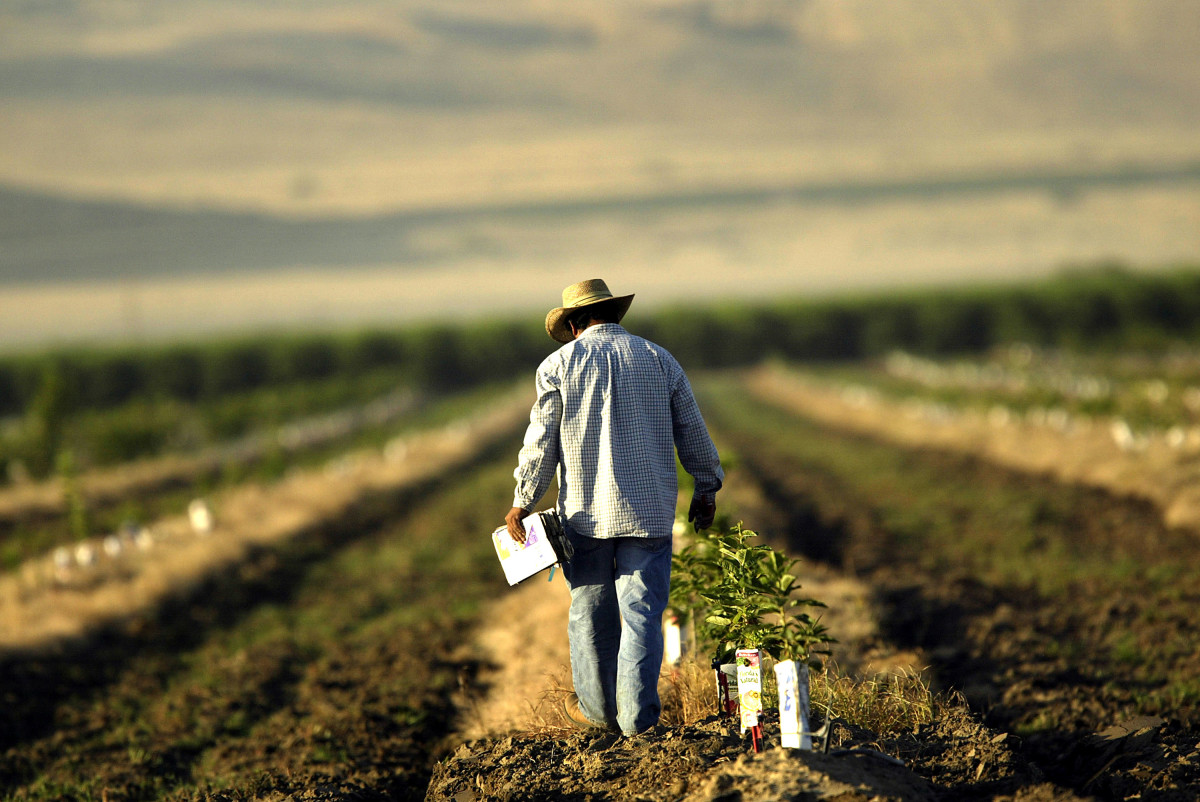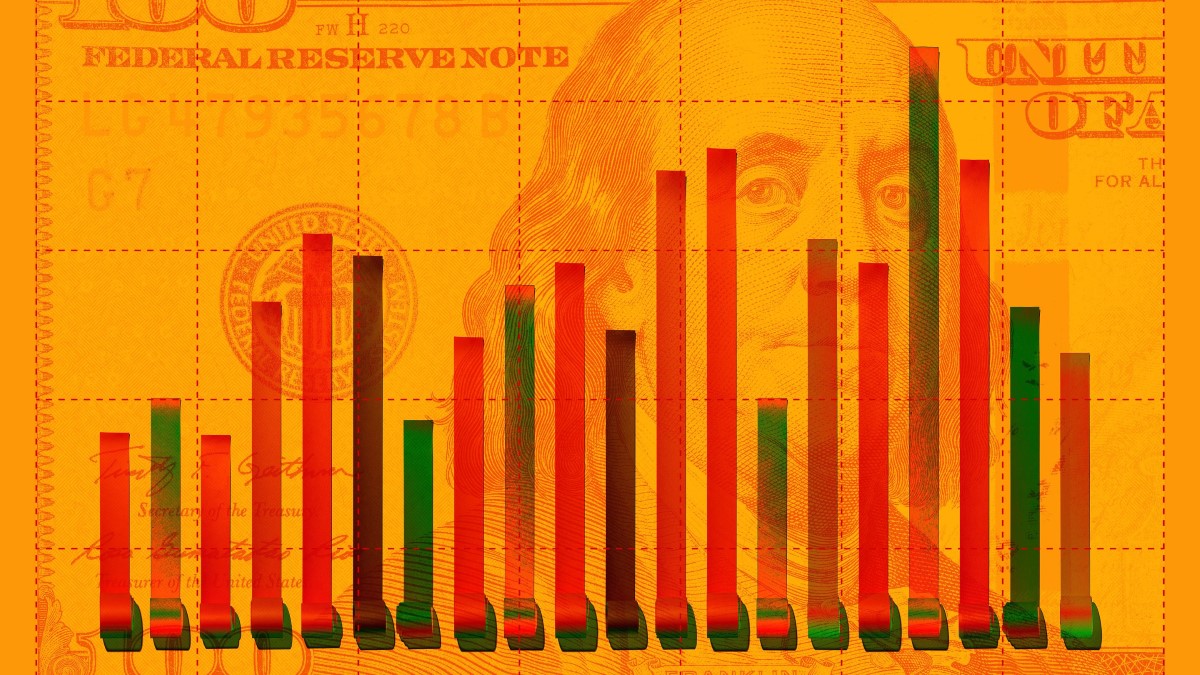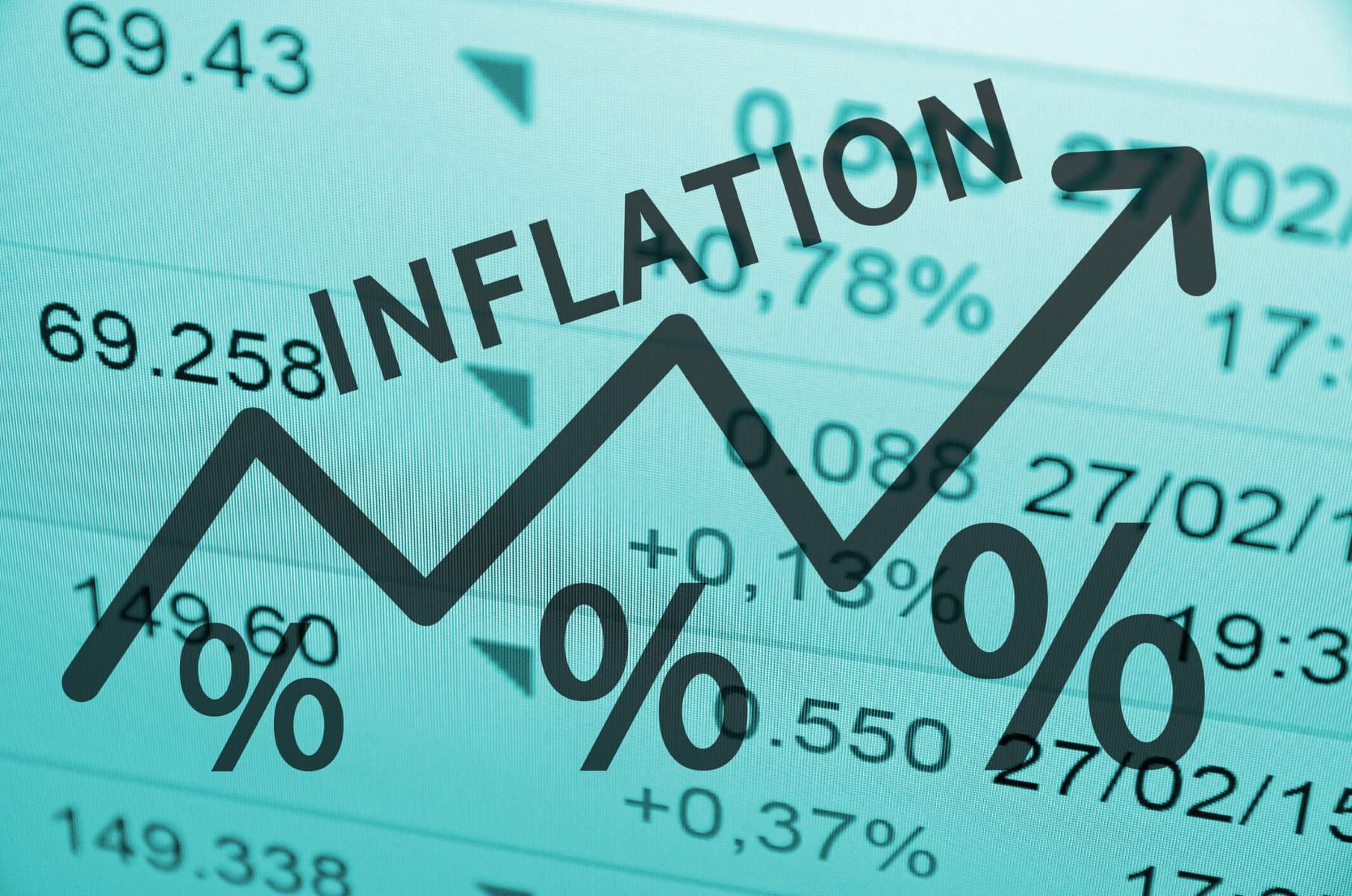

Finance
How Does Inflation Affect Farmers?
Published: October 19, 2023
Discover the impact of inflation on farmers and their finances. Learn how rising prices and fluctuating markets affect agriculture and farming communities.
(Many of the links in this article redirect to a specific reviewed product. Your purchase of these products through affiliate links helps to generate commission for LiveWell, at no extra cost. Learn more)
Table of Contents
Introduction
Inflation is a crucial economic concept that affects various sectors of an economy, and the agricultural industry is no exception. Farmers play a vital role in providing food and raw materials, making them particularly susceptible to the impacts of inflation. Understanding how inflation affects farmers is essential for policymakers, agricultural professionals, and even consumers.
Inflation refers to the rise in the general price level of goods and services over a specific period of time. It erodes the purchasing power of money, as each unit of currency buys fewer goods or services. Inflation can be influenced by various factors, such as government policies, demand and supply dynamics, and global economic conditions. The effects of inflation can be felt across different sectors, including agriculture.
For farmers, inflation presents both challenges and opportunities. On one hand, rising prices for agricultural commodities may lead to increased revenue. However, on the other hand, inflation may also result in higher input costs, decreased purchasing power, and changes in borrowing costs. Additionally, fluctuations in international trade and government policies can have a significant impact on farmers’ ability to navigate inflationary pressures.
In this article, we will explore the effects of inflation on farmers and the agricultural industry. We will delve into the specific challenges posed by inflation, such as the increase in input costs, decreased purchasing power, changes in borrowing costs, and the impact on agricultural commodities. We will also discuss the challenges in international trade and explore how government policies can influence the inflationary environment for farmers. Finally, we will provide some strategies that farmers can employ to mitigate the effects of inflation and ensure their long-term sustainability.
Overall, understanding the relationship between inflation and farmers is crucial for policymakers, economists, and agricultural professionals alike. By recognizing and addressing the challenges and opportunities presented by inflation, we can develop strategies to support and sustain the agricultural sector, ensuring the availability of food and raw materials for the growing population.
Understanding Inflation
Inflation is a concept that measures the increase in the general price level of goods and services within an economy over time. It is commonly expressed as an annual percentage rate and is influenced by various factors, such as money supply, demand and supply dynamics, and government policies.
The primary cause of inflation is an excessive increase in the money supply relative to the available goods and services. When there is more money in circulation, individuals and businesses have greater purchasing power, which increases demand for goods and services. In turn, this increased demand leads to higher prices.
Inflation can have both positive and negative effects on different stakeholders within an economy. On one hand, it can stimulate economic growth by encouraging spending and investment. When prices are rising, consumers may be inclined to purchase goods and services sooner rather than later, leading to increased economic activity.
However, inflation can also have detrimental effects. One of the main concerns is the erosion of purchasing power. As prices rise, the value of money decreases, meaning that the same amount of money can buy fewer goods and services. This decrease in purchasing power affects consumers, including farmers, as they have to spend more for the same inputs.
Inflation can also lead to uncertainty and volatility in the economy. This can make long-term planning and investment difficult, as future prices may be uncertain. Moreover, inflation can distort price signals, making it challenging for businesses and individuals to make informed decisions.
Central banks and governments typically implement monetary and fiscal policies to manage inflation. Central banks adjust interest rates, control the money supply, and use other monetary tools to regulate inflation. Governments can also influence inflation through their fiscal policies, such as taxation and public spending.
Understanding the causes and effects of inflation is crucial for farmers and the agricultural industry. It helps them anticipate price movements, plan for input costs, and assess the viability of their operations in an inflationary environment. By actively monitoring and adapting to inflationary pressures, farmers can ensure their long-term profitability and sustainability in the ever-changing economic landscape.
Impact of Inflation on Farmers
Inflation has a significant impact on farmers and the agricultural industry as a whole. The effects of inflation can be observed in various aspects of farming operations, from input costs to borrowing and market conditions.
First and foremost, inflation leads to an increase in input costs for farmers. As the general price level rises, the cost of essential inputs such as seeds, fertilizers, pesticides, and machinery also increases. This puts a strain on farmers’ budgets, requiring them to allocate a larger portion of their revenues to cover these rising expenses. Consequently, farmers may need to seek ways to optimize their input usage or explore alternative methods to manage costs.
Additionally, inflation causes a decrease in the purchasing power of farmers. When the prices of agricultural commodities rise, farmers receive higher revenues for their produce. However, this increase in revenue may not adequately compensate for the increase in input costs. As a result, farmers find themselves with reduced purchasing power, limiting their ability to invest in new equipment, technology, or expand their operations.
Borrowing costs also tend to change with inflation. In an inflationary environment, interest rates are often adjusted by central banks to manage the economy. Higher interest rates make borrowing more expensive for farmers, making it more challenging for them to access the necessary funds to finance their agricultural activities. This can hinder their ability to invest in equipment, expand their operations, or implement innovative techniques.
The agricultural commodities market is heavily influenced by inflation. As the general price level rises, the prices of agricultural commodities also tend to increase, reflecting the increased costs of inputs and production. However, the impact on farmers is not solely positive. Fluctuations in commodity prices due to inflation can be unpredictable, creating volatility in the market. This volatility can affect farmers’ profitability, as they need to navigate price fluctuations and make timely decisions regarding the sale of their produce.
Furthermore, inflation can pose challenges in international trade for farmers. If the domestic currency depreciates due to inflation, it can make agricultural exports more competitive in the global market. However, farmers may also face challenges with importing essential inputs and machinery due to the rising costs associated with a weaker currency.
Government policies play a crucial role in managing inflation and its impact on farmers. Sound monetary and fiscal policies can help stabilize prices and create a favorable business environment for farmers. However, inadequate policies or regulations can exacerbate inflationary pressures and make it more difficult for farmers to cope with rising costs and market fluctuations.
In order to mitigate the effects of inflation, farmers can adopt various strategies. These include implementing efficient farm management practices, exploring cost-saving technologies, diversifying their income streams, and staying abreast of market trends and government policies. By being proactive and adaptable, farmers can navigate the challenges posed by inflation and ensure the long-term sustainability of their agricultural operations.
Increase in Input Costs
One of the significant impacts of inflation on farmers is the increase in input costs. Inputs such as seeds, fertilizers, pesticides, and machinery are essential for agricultural production, and their prices tend to rise with inflation. This increase in input costs poses challenges for farmers and can have a significant impact on their profitability and sustainability.
Rising input costs can be attributed to several factors. As inflation occurs, the general price level of goods and services increases, including the prices of raw materials and commodities used in agricultural inputs. The cost of producing and transporting these inputs also tends to rise with inflation, contributing to the overall increase in input costs for farmers.
The increase in input costs can create a significant burden on farmers’ budgets. They need to allocate a larger portion of their revenues to cover these rising expenses, which can lead to lower profitability or even losses if not managed effectively. As a result, farmers may need to make difficult decisions, such as reducing input usage or exploring alternative, cost-effective methods to manage their resources.
The rise in input costs can also impact farmers’ ability to invest in modern equipment and technology. As input prices increase, farmers may have limited resources available to upgrade or replace their machinery, limiting their ability to adopt efficient and sustainable agricultural practices. This can have long-term implications on productivity, as outdated equipment may result in lower yields and increased labor requirements.
Inflation can also affect the cost of labor, further adding to the overall increase in input costs. As wages and salaries rise with inflation, farmers may find it challenging to hire and retain skilled workers, leading to additional costs for training or increased reliance on mechanization.
To mitigate the impact of increasing input costs, farmers can explore several strategies. Firstly, they can closely monitor input prices and market trends to identify cost-effective alternatives or negotiate better deals with suppliers. Additionally, adopting sustainable farming practices, such as precision agriculture and integrated pest management, can optimize input usage and reduce costs in the long run.
Collaboration among farmers, such as forming cooperatives or purchasing groups, can also help achieve economies of scale and negotiate bulk discounts on inputs. Investing in research and development to develop and implement efficient production techniques specific to the region or crop can also help reduce input costs and improve overall productivity.
Government support and policies can play a crucial role in mitigating the impact of rising input costs. Offering subsidies or tax incentives for farmers to access quality inputs at affordable prices can alleviate the financial burden. Additionally, investing in infrastructure development, such as better irrigation systems or storage facilities, can help reduce post-harvest losses and improve input efficiency.
Overall, the increase in input costs due to inflation presents a significant challenge for farmers. By closely managing their input usage, adopting sustainable farming practices, collaborating with other farmers, and seeking government support, farmers can navigate the impact of rising input costs and ensure the long-term profitability and sustainability of their agricultural operations.
Decreased Purchasing Power
Inflation leads to a decrease in the purchasing power of money, which has a direct impact on farmers. As prices rise due to inflation, the same amount of money can buy fewer goods and services. This decrease in purchasing power poses challenges for farmers and can disrupt their ability to cover essential expenses and invest in their agricultural operations.
For farmers, the decrease in purchasing power means that they need to spend more for the same inputs. Seeds, fertilizers, pesticides, and other agricultural supplies become more expensive, eating into farmers’ budgets. This can reduce their profitability and make it more challenging to meet production costs.
Moreover, the decrease in purchasing power can limit farmers’ ability to invest in modern equipment, technology, and infrastructure. Upgrading machinery, implementing precision agriculture techniques, or building necessary infrastructure requires significant capital. However, with decreased purchasing power, farmers often find themselves with limited resources, hindering their ability to make these critical investments.
Additionally, the decrease in purchasing power can affect farmers’ standard of living. As prices rise, the same income can afford fewer goods and services for personal and household needs. This can impact the overall quality of life for farmers and their families, making it harder for them to fulfill basic needs and enjoy the benefits of their hard work.
The decrease in purchasing power also affects farmers’ ability to reinvest in their farms and ensure long-term sustainability. With limited financial resources, farmers may struggle to adopt new technologies, invest in research and development, or diversify their operations. This can hinder their ability to adapt to changing market conditions or implement innovative practices to improve productivity and efficiency.
There are several strategies that farmers can employ to mitigate the impact of decreased purchasing power. Firstly, they can focus on optimizing their expenses and finding cost-effective alternatives for inputs and supplies. Adopting sustainable farming practices and resource-efficient techniques can also help reduce costs and improve overall profitability.
Efforts to increase value-added activities and diversify income streams can also help offset the impact of decreased purchasing power. For example, farmers can explore opportunities for direct sales to consumers, value-added processing of agricultural products, or agri-tourism initiatives. These strategies can generate additional revenue and provide some insulation against the effects of inflation.
Furthermore, farmers can actively monitor and manage their financial resources by considering effective budget planning, seeking favorable financing options, and exploring risk management strategies, such as insurance or hedging. Government programs that provide financial support, subsidies, or access to low-interest loans can also help alleviate the impact of decreased purchasing power for farmers.
Overall, the decrease in purchasing power due to inflation poses significant challenges for farmers. By implementing cost-saving measures, diversifying income streams, and availng themselves of government support, farmers can navigate the effects of decreased purchasing power and ensure their long-term sustainability in an inflationary environment.
Change in Borrowing Costs
Inflation not only affects the prices of goods and services but also has an impact on borrowing costs for farmers. Changes in inflation can lead to fluctuations in interest rates, making it more expensive for farmers to borrow money. The change in borrowing costs has implications for farmers’ access to financing, their ability to invest in their operations, and the overall profitability of their agricultural activities.
When inflation rises, central banks often respond by raising interest rates to curb inflationary pressures. Higher interest rates increase the cost of borrowing, as lenders charge more for the risk associated with lending money during inflationary periods. This means that farmers may need to pay higher interest rates on loans, making it more expensive for them to finance their agricultural activities.
The increase in borrowing costs can significantly impact farmers’ ability to access necessary funds for various purposes, such as purchasing land, investing in equipment, or expanding their operations. Higher interest rates can limit the amount of money farmers can borrow or result in lower loan approval rates, constraining their ability to make essential investments in their farms.
Furthermore, the change in borrowing costs can affect farmers’ financial planning and decision-making processes. Fluctuating interest rates make it challenging for farmers to determine the long-term viability and sustainability of their agricultural operations. Uncertainty in borrowing costs can lead to hesitation in making significant investments or taking on new projects, as the profitability and cash flow implications become less predictable.
The impact of changing borrowing costs extends beyond short-term financing needs. Farmers may also face challenges in managing debt, especially if they have existing loans with variable interest rates. As interest rates increase, the cost of servicing these loans rises, potentially affecting their cash flow and ability to meet other financial obligations.
To mitigate the impact of changing borrowing costs, farmers can take several steps. It is essential to stay informed about current interest rate trends and monitor market conditions. This allows farmers to anticipate potential changes and make financial decisions accordingly, such as refinancing loans or adjusting debt management strategies.
Farmers can also explore various financing options to secure favorable terms and interest rates. This may involve seeking loans from different lenders, including agricultural banks, credit unions, or government-backed loan programs that offer competitive rates and flexible terms.
Additionally, farmers can consider implementing risk management strategies, such as using interest rate swaps or caps to hedge against potential interest rate fluctuations. These financial instruments can provide some level of protection against rising borrowing costs and help farmers manage their finances more effectively.
Government support and policies can also play a role in mitigating the impact of changing borrowing costs. Governments can provide subsidies for interest payments, offer loan guarantee programs, or establish rural development funds that provide low-interest loans specifically for the agricultural sector. These initiatives can make financing more accessible and affordable for farmers.
Overall, the change in borrowing costs due to inflation can significantly affect farmers’ ability to finance their agricultural activities. By staying informed, exploring financing options, and leveraging government support, farmers can navigate the impact of changing borrowing costs and ensure their long-term financial stability.
Effects on Agricultural Commodities
Inflation has a direct impact on agricultural commodities, both in terms of production costs and market prices. The changes in the prices of agricultural commodities due to inflation can affect farmers’ profitability, market dynamics, and even food security. Understanding these effects is crucial for farmers, consumers, and policymakers in managing the impact of inflation on the agricultural sector.
One of the primary effects of inflation on agricultural commodities is the increase in production costs. As inflation leads to higher input prices, farmers incur additional expenses in cultivating and harvesting their crops or raising livestock. These increased production costs can put a strain on farmers’ profitability, as they need to generate higher revenues to offset these rising expenses.
Furthermore, the increase in production costs can lead to higher market prices for agricultural commodities. When farmers face higher input costs, they often pass on these costs to consumers through increased prices for their products. This can result in food inflation, affecting consumers’ purchasing power and potentially impacting food security, especially for vulnerable populations.
The varying impact of inflation on different agricultural commodities is worth noting. Some commodities may experience more significant price increases due to inflation, while others may be less affected. This can depend on factors such as supply and demand dynamics, market conditions, and the degree to which agricultural inputs are tied to the production process.
Inflation can also influence international trade in agricultural commodities. Fluctuations in currency exchange rates, which can be influenced by inflation, can impact the competitiveness of exports and imports. If the domestic currency depreciates due to inflation, agricultural exports may become more competitive in the global market. Conversely, increased input costs and rising commodity prices may impact a country’s import capacity and trade balance.
Moreover, price volatility in agricultural commodities due to inflation can lead to challenges in market planning and hedging strategies. Farmers need to constantly monitor market conditions and anticipate fluctuations in prices to make informed selling decisions. Volatile prices can make it difficult to accurately estimate revenues and manage risks associated with price changes.
Government policies can play a critical role in managing the effects of inflation on agricultural commodities. Implementing regulations or incentives that support stable market conditions, promote fair trade practices, and provide access to timely market information can help manage the impact of inflation on agricultural commodity prices.
Overall, the effects of inflation on agricultural commodities can be significant, impacting both production costs for farmers and market prices for consumers. By closely monitoring costs, implementing efficient farming practices, and establishing sound market policies, farmers and policymakers can navigate the challenges posed by inflation and ensure the stability and sustainability of the agricultural sector.
International Trade and Export Challenges
Inflation can present challenges for farmers engaged in international trade and exporting agricultural products. Fluctuations in currency exchange rates, rising production costs, and changing market dynamics can significantly impact the competitiveness and profitability of agricultural exports. Understanding these challenges is crucial for farmers and policymakers involved in international trade.
One of the primary challenges that farmers face in international trade due to inflation is currency exchange rate fluctuations. Inflation can lead to depreciation of the domestic currency, making agricultural exports more competitive in the global market. A weaker currency can make exported goods cheaper for international buyers, potentially increasing demand.
However, fluctuations in exchange rates can also pose significant risks. If the domestic currency strengthens due to inflation-fighting measures or other economic factors, it can make agricultural exports more expensive for international buyers. This can lead to a decrease in demand and a loss of competitiveness in the global market.
Rising production costs as a result of inflation can also impact the competitiveness of agricultural exports. Increased input prices, such as fertilizers, pesticides, and transportation costs, can make exported goods more expensive. This can erode profit margins and potentially reduce the demand for these agricultural products in international markets.
Furthermore, changing market dynamics influenced by inflation can impact the demand for and pricing of agricultural exports. Inflation can affect consumers’ purchasing power in importing countries, leading to changes in their consumption patterns. If consumers shift to lower-priced alternatives or reduce overall consumption due to rising prices, it can impact the demand for agricultural imports.
Inflation can also affect the availability and cost of credit for international trade. Increased borrowing costs due to inflation can make financing more expensive for exporters, impacting their ability to access funds for exporting activities. This can make it challenging for farmers to invest in expanding export capabilities or to meet the demands of international customers.
Government policies and trade agreements play a crucial role in addressing the challenges of international trade in the face of inflation. Governments can provide support through export subsidies, trade promotion programs, and diplomatic efforts to negotiate favorable trade agreements. These initiatives can help exporters manage the impact of inflation and maintain their competitiveness in international markets.
Additionally, fostering a conducive business environment, implementing transparent trade policies, and promoting market access can support farmers in expanding their export capabilities. Collaboration with international trade organizations and participation in trade events and exhibitions can also facilitate networking opportunities and enable farmers to establish relationships with potential international buyers.
Overall, inflation presents challenges for farmers engaged in international trade and exporting agricultural products. By actively monitoring currency exchange rates, managing production costs, understanding market dynamics, and leveraging government support and policies, farmers can navigate the complexities of international trade, maintain competitiveness, and seize opportunities presented by global markets.
Government Policies and Inflation
Government policies play a crucial role in managing inflationary pressures and mitigating the impact of inflation on various sectors of the economy, including agriculture. By implementing sound monetary and fiscal policies, governments aim to maintain price stability, support economic growth, and ensure the overall well-being of farmers and the agricultural industry.
Monetary policies, implemented by central banks, are one of the key tools used to manage inflation. Central banks adjust interest rates, control the money supply, and conduct open market operations to influence inflationary pressures. By raising interest rates, central banks aim to reduce borrowing and spending, thereby curbing inflation. Conversely, lowering interest rates can stimulate economic activity and combat deflationary pressures.
Inflation targeting is a common monetary policy framework used by central banks to manage inflation. Under this approach, central banks set specific inflation targets and implement policies to achieve those targets over a defined period. By providing a clear inflation target, central banks help create a stable business environment and enable farmers and businesses to plan and make informed decisions.
Fiscal policies, implemented by governments, also play a role in managing inflation. Governments use fiscal tools such as taxation, public spending, and budgetary measures to influence the economy and inflation. For example, increasing taxes on certain goods or reducing government spending can help reduce demand and control inflation.
Government policies can also address the specific challenges faced by farmers due to inflation. Providing subsidies or incentives for agricultural inputs and equipment can help alleviate the financial burden on farmers and make farming more affordable. Additionally, implementing policies that promote research and development in agriculture can support the adoption of innovative technologies and practices, improving productivity and sustainability.
Price stabilization programs are another tool used by governments to manage inflation and protect farmers. These programs aim to ensure stable farm-gate prices for agricultural commodities, thereby providing income stability for farmers. For example, minimum support price schemes can be implemented to provide a guaranteed price for certain commodities.
Trade policies also influence the impact of inflation on agriculture. Governments can implement import/export restrictions, tariffs, or quotas to manage the prices of agricultural commodities in domestic markets. These policies can be designed to protect domestic farmers from excessive price fluctuations or to regulate the flow of imports and exports in view of inflationary pressures.
However, government policies should strike a balance between managing inflation and ensuring a supportive environment for agricultural growth. Excessive price controls, subsidies, or trade restrictions can distort market forces and hinder farmers’ long-term viability. Thus, policies need to be carefully designed and periodically evaluated to create a favorable environment for both farmers and consumers.
Overall, government policies have a significant impact on managing inflation and its effects on agriculture. By implementing appropriate monetary, fiscal, and trade policies, governments can create a stable economic environment, support the agricultural sector, and ensure the long-term sustainability of farmers and the availability of food and raw materials for the population.
Mitigating Strategies for Farmers
Farmers can employ several strategies to mitigate the effects of inflation and ensure their long-term sustainability in an ever-changing economic landscape. By adopting proactive measures and adjusting their approach to farming operations, farmers can navigate inflationary pressures and maintain profitability.
One of the key strategies for farmers is implementing efficient farm management practices. This includes optimizing input usage, adopting precision agriculture techniques, and utilizing technology to increase productivity and reduce costs. By carefully monitoring input usage, farmers can identify areas of inefficiency and make necessary adjustments to minimize waste and maximize crop yields.
Exploring cost-saving technologies can also help farmers mitigate the impact of inflation. Advancements in irrigation systems, farm machinery, and crop protection technologies can significantly improve resource utilization and reduce expenses. Investing in these technologies, although initially costly, can lead to long-term cost savings and improved overall efficiency.
Diversifying income streams is another effective strategy for farmers. By expanding beyond traditional farming activities, such as through agri-tourism, value-added processing, or direct sales to consumers, farmers can create additional revenue streams. Diversification not only provides a buffer against price fluctuations in specific commodities but also opens up opportunities for enhanced profitability and risk management.
Staying informed about market trends, government policies, and changing consumer preferences is essential for farmers. By keeping abreast of market developments, farmers can make informed decisions regarding crop selection, timing of sales, and pricing strategies. Understanding government policies and subsidies can help farmers take advantage of available support and leverage opportunities that may arise.
Risk management plays a crucial role in mitigating the impact of inflation on farmers. This includes implementing strategies such as crop insurance, hedging, or forward contracting to protect against price volatility and ensure income stability. By managing risks associated with commodity prices, input costs, and weather conditions, farmers can safeguard their financial well-being in an inflationary environment.
Collaboration among farmers can provide mutual benefits and help mitigate the impact of inflation. Forming cooperatives or purchasing groups can allow farmers to pool resources, achieve economies of scale, negotiate bulk discounts on inputs, or collectively market their products. Cooperative efforts strengthen bargaining power and allow farmers to access resources and services that may be financially challenging for individual farmers.
Seeking government support and participating in agricultural programs can also aid farmers in navigating the effects of inflation. Governments often provide subsidies, loans, or grants specifically designed to support agriculture. By taking advantage of these programs, farmers can access financial resources, receive technical assistance, and benefit from training and education programs.
Adopting sustainable agricultural practices is not only environmentally responsible but also beneficial in mitigating the impact of inflation. Techniques such as water conservation, integrated pest management, and soil health management can reduce input costs and improve overall farm performance. Additionally, sustainable practices can attract environmentally conscious consumers and open up premium market opportunities.
Overall, by implementing efficient farm management practices, diversifying income streams, staying informed, managing risks, collaborating with other farmers, and leveraging government support, farmers can mitigate the effects of inflation. These strategies help ensure their long-term profitability, sustainability, and resilience in the face of economic challenges.
Conclusion
Inflation has a profound impact on farmers and the agricultural industry at large. Understanding the effects of inflation on farmers is crucial for policymakers, agricultural professionals, and consumers alike. As inflation erodes the purchasing power of money, farmers grapple with challenges such as increasing input costs, decreased purchasing power, changing borrowing costs, and fluctuations in agricultural commodity prices.
The rise in input costs due to inflation puts pressure on farmers’ budgets, requiring them to optimize input usage and explore cost-saving technologies. Decreased purchasing power makes it more difficult for farmers to invest in modern equipment and technology, hindering their ability to improve productivity and sustainability. Changing borrowing costs add to the financial challenges farmers face, affecting their access to financing and capacity for investment.
Inflation also has implications for agricultural commodities market, both domestically and in international trade. Farmers need to navigate fluctuations in commodity prices, market uncertainty, and challenges in export competitiveness. Additionally, the influence of government policies on inflation and agriculture highlights the importance of appropriate monetary, fiscal, and trade policies in supporting farmers and ensuring stability in the agricultural sector.
To mitigate the effects of inflation, farmers can adopt strategies such as efficient farm management practices, diversification of income streams, staying informed about market trends, managing risks, collaborating with other farmers, and leveraging government support. These strategies can help farmers navigate the challenges posed by inflation, maintain profitability, and ensure their long-term sustainability.
Ultimately, managing the impact of inflation on farmers requires a comprehensive approach involving collaboration between farmers, policymakers, and agricultural organizations. By implementing effective strategies and policies, stakeholders can support farmers in overcoming the challenges caused by inflation, ensuring stable food production, and a sustainable agricultural sector for the future.














